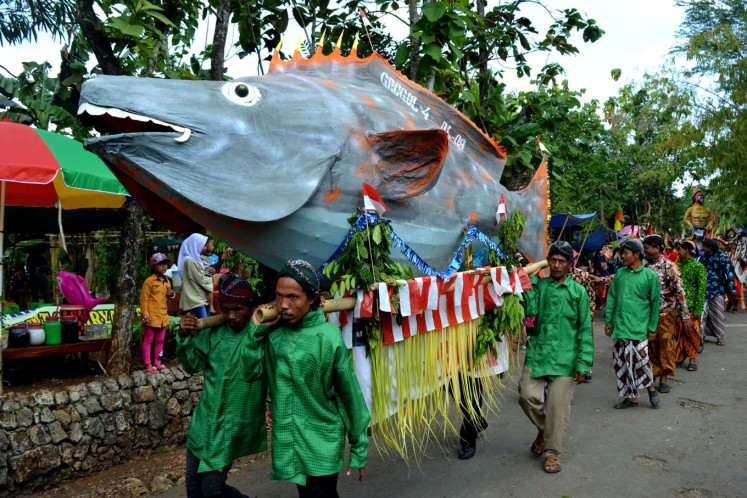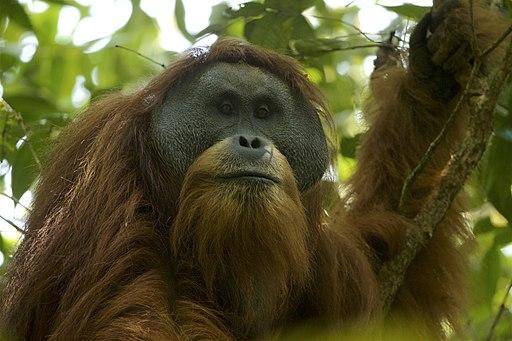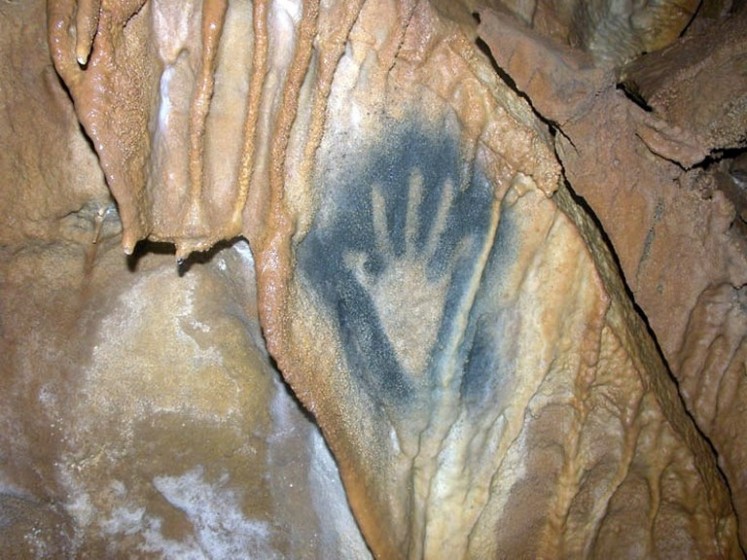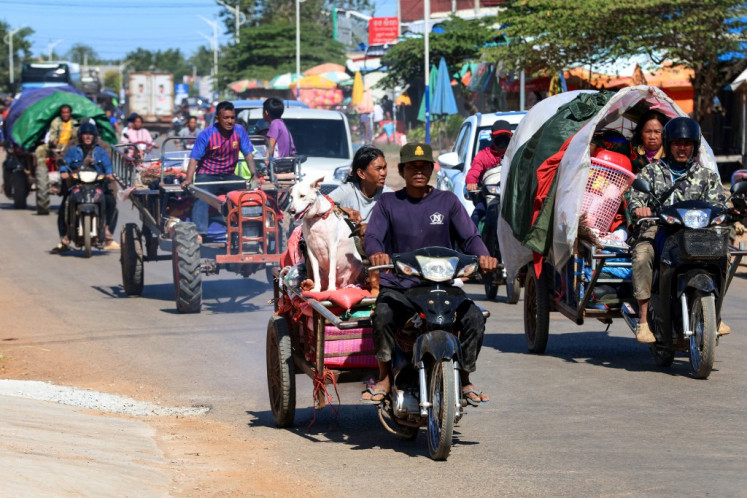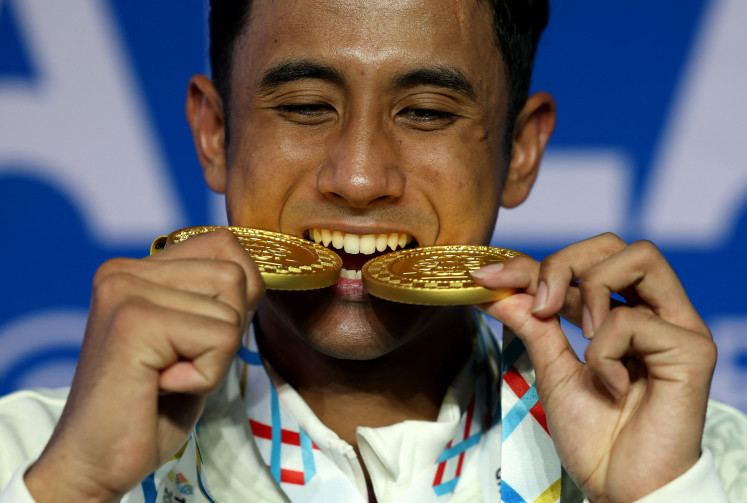Popular Reads
Top Results
Can't find what you're looking for?
View all search resultsPopular Reads
Top Results
Can't find what you're looking for?
View all search resultsMaking papier maché sculptures
Sixty-six-year-old Jumiyo makes unique papier mâché sculptures that adorn local restaurants and harvest ceremonies in his village of Gunungkidul, Yogyakarta.
Change text size
Gift Premium Articles
to Anyone
A
man sits in the courtyard of his house, his dexterous hands arranging bamboo strands woven with iron wire, forming a large sphere.
"I am making the skeleton frame for an elephant's head sculpture. It was ordered by a restaurant in Surakarta, which will display it next to a rice field for a photo spot for its patrons," Jumiyo said while working on his craft.
The 66-year-old has been making a living out of creating papier mâché sculptures since 2000. He works out of his home in Gading village, Gunungkidul regency, Yogyakarta.
His workstation is lined with sculptures in various stages of completion, some of which are of animals, such as cows, goats, birds, lions and camels, while others are wayang (shadow puppet) characters.
Jumiyo's papier mâché sculptures are also made of bamboo, wood and iron wire that are shaped into a three dimensional frame following the shape of characters or animals to be created. The skeleton is then coated with paper, usually used cement bags, that is layered and coated with glue made with a starchy material.
To complete the designs, parts such as eyes, beaks or nails made from plastic materials are incorporated. Meanwhile, for hair or fur, Jumiyo uses ijuk (rough fiber) or sabut kelapa (coconut fiber).
"The materials used to make the sculptures are easy to find. I often don't have to go out and look for them as many people come here to sell used paper, especially used cement bags, and coconut fiber that is collected from sellers of young coconuts," Jumiyo said.
Read also: Surakarta upcycling market gives new shape to old things
The used items are shaped into a sculpture within three to five days. Completed sculptures sell for Rp 750,000 (US$53.66) to Rp 1,500,000 ($107), depending on the size and difficulty of the item. Jumiyo also rents out sculptures for Rp 350,000 ($25).
His busiest days are national celebrations, such as Independence Day, and Islamic celebrations such as Idul Adha and Idul Fitri.
For Idul Fitri this year, Jumiyo has received orders for 30 sculptures of camels and Garuda, which will be displayed in Wonosari and Kaliurang during Takbiran (night marking end of Ramadhan).
One of Jumiyo's papier m'ché sculptures are featured in a village ceremony to celebrate the harvest. (JP/Stefanus Ajie)In his village in Gunungkidul, his sculptures are also used at ceremonies celebrating harvests.
Jumiyo learned to make sculptures when he worked on sets for horror movies in Jakarta. When job opportunities at the film studio decreased, he returned to Yogyakarta.
"Making papier mâché sculptures like this is something I enjoy. The process of making them is a pleasure for me, and every time I make a sculpture with a new shape it is always a challenge," Jumiyo said. (liz/wng)



